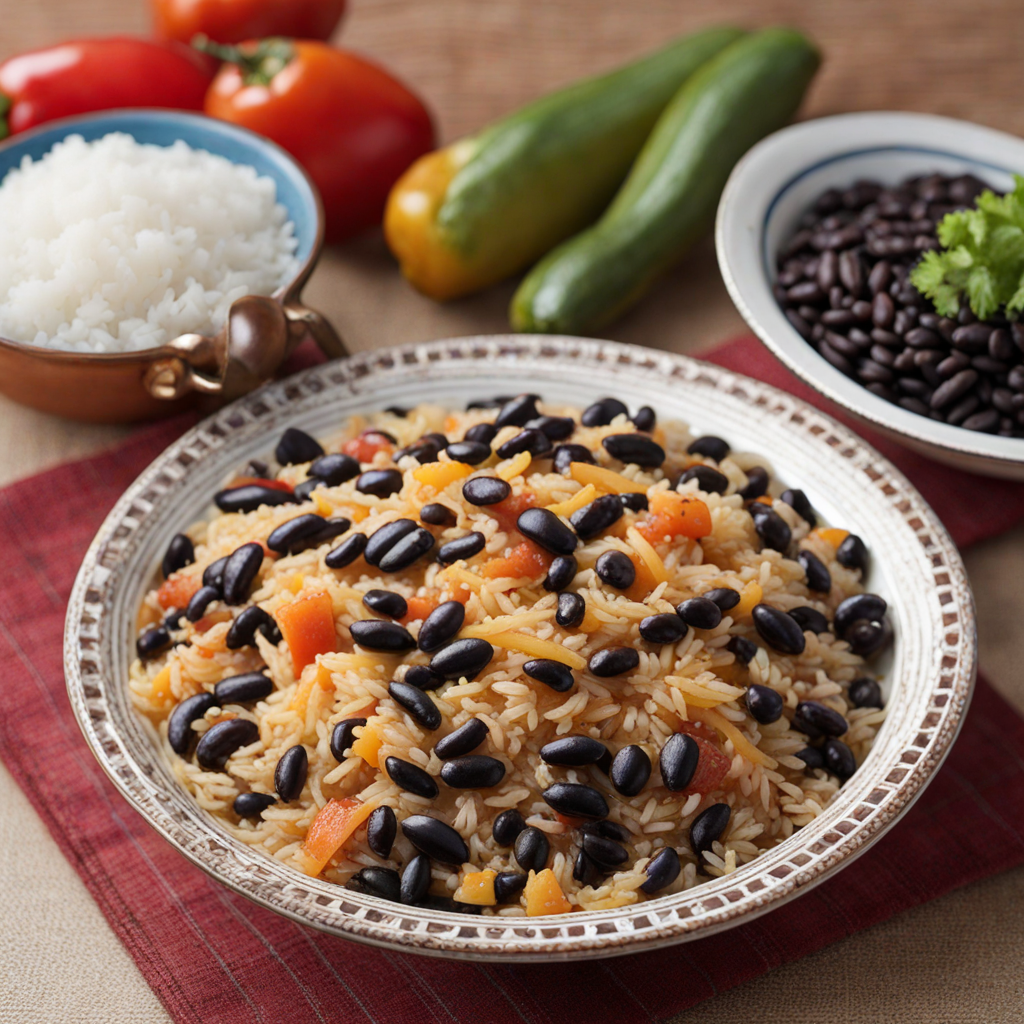Uruguayan Pizza
Uruguayan pizza is a delightful fusion of culinary traditions, showcasing a unique blend of Italian influences and local flavors. Unlike its Neapolitan counterpart, which is characterized by a thin crust, Uruguayan pizza typically features a thicker, bread-like base that is soft on the inside and slightly crispy on the outside. This hearty crust serves as the perfect canvas for a variety of toppings, often including a generous layer of melted mozzarella cheese, which is a staple in most pizza styles. The richness of the cheese is complemented by the use of fresh, local ingredients, creating a comforting dish that is both satisfying and flavorful. One of the standout characteristics of Uruguayan pizza is its emphasis on simplicity and quality. Traditional toppings may include classic options such as tomato sauce, olives, and bell peppers, but you'll also find unique local twists like the addition of chorizo or even a spread of chimichurri sauce. This vibrant green condiment, made from parsley, garlic, vinegar, and oil, adds a zesty kick that elevates the pizza to new heights, making each bite an exploration of flavors. Additionally, some pizzerias in Uruguay offer a version called "pizza a la parrilla," where the pizza is cooked on a grill, infusing it with a smoky aroma that enhances the overall taste experience. As you indulge in Uruguayan pizza, you'll notice that it's often enjoyed in a casual setting, making it a perfect dish for social gatherings and celebrations. It's common to find locals sharing a large pie among friends and family, accompanied by a refreshing beverage like a cold beer or the traditional Uruguayan drink, "medio y medio." The communal nature of enjoying this pizza adds to its charm, as each person can savor the diverse toppings and flavors that come together in one delightful dish. Overall, Uruguayan pizza is more than just food; it's a cultural experience that invites you to savor the rich culinary heritage of Uruguay.
How It Became This Dish
The History of Pizza Uruguaya: A Culinary Journey Through Time Origins and Early Influences Pizza Uruguaya, a beloved culinary staple in Uruguay, is a testament to the country's diverse cultural heritage. Its roots can be traced back to the late 19th and early 20th centuries, a time when waves of Italian immigrants flooded into Uruguay, particularly into Montevideo, the nation’s capital. These immigrants, primarily from the southern regions of Italy such as Naples and Sicily, brought with them their cherished culinary traditions, including various types of bread and pizzas. The original Italian pizza was characterized by its thin crust and simple toppings, typically featuring tomatoes, mozzarella cheese, and fresh basil. However, as the Italian communities settled in Uruguay, their recipes began to evolve, influenced by local ingredients, tastes, and culinary practices. The convergence of Italian and Uruguayan cultures gave birth to Pizza Uruguaya, a unique interpretation that would eventually become a national dish. Cultural Significance Pizza Uruguaya is more than just a food item; it embodies the spirit of Uruguay’s multicultural identity. The dish has become synonymous with family gatherings, social events, and communal celebrations. In Uruguay, sharing a pizza with friends or family is an integral part of social life, often enjoyed during Sunday family lunches or casual gatherings. Pizzerias are popular meeting spots, reflecting the country's relaxed and friendly atmosphere. The dish has also found its place in the national psyche, serving as a bridge between generations. As traditional recipes have been passed down through families, they have adapted to modern tastes while retaining core elements that reflect their origins. This continuity reinforces the cultural significance of Pizza Uruguaya, as it connects the past with the present. Characteristics of Pizza Uruguaya Distinct from its Italian counterparts, Pizza Uruguaya is characterized by its thick, fluffy crust, which is often more akin to a focaccia than the traditional Neapolitan pizza. The dough is typically made with flour, water, yeast, and salt, and it is allowed to rise longer than the traditional pizza dough, resulting in a lighter, airier texture. This thick crust is a defining feature, providing a sturdy base that can hold an abundance of toppings. The toppings of Pizza Uruguaya also set it apart. While classic Italian pizzas may focus on minimalism, Pizza Uruguaya is often generously topped with a variety of ingredients. Common toppings include mozzarella cheese, bell peppers, onions, olives, and a variety of meats such as ham, salami, and chorizo. A distinctive aspect of Pizza Uruguaya is the use of a rich tomato sauce that often contains a hint of sweetness, reflecting local palates and culinary preferences. Development Over Time As Uruguay embraced its unique pizza culture, the dish continued to evolve throughout the 20th century. The post-World War II era saw a surge in pizzerias, particularly in Montevideo, as returning soldiers and new waves of immigrants contributed to the culinary landscape. These establishments became popular not only for their pizza but also for their vibrant atmospheres, where music, laughter, and the clinking of glasses created a sense of community. In the 1980s and 1990s, Pizza Uruguaya gained further prominence as globalization introduced new flavors and culinary techniques to the nation. Chefs began experimenting with fusion pizzas, incorporating international flavors while maintaining the essence of the traditional dish. This period also saw the emergence of gourmet pizzerias that offered creative toppings and artisanal approaches to the classic recipe. The 21st century marked a renaissance for Pizza Uruguaya, with a renewed interest in traditional cooking methods and the use of high-quality, local ingredients. Artisanal bakeries began to revive old recipes, and many chefs sought to honor the dish’s heritage while innovating with new techniques. The internet and social media played a significant role in this renaissance, allowing home cooks and chefs to share their recipes and experiences, creating a vibrant community focused on Pizza Uruguaya. Modern Interpretations and Global Reach Today, Pizza Uruguaya is not only cherished in Uruguay but has also gained recognition internationally. Uruguayans living abroad often reminisce about their favorite pizzerias at home, leading to the emergence of Uruguayan-style pizzerias in cities with significant Uruguayan populations, such as Buenos Aires, Madrid, and New York. These establishments aim to recreate the authentic flavors of Pizza Uruguaya, serving as culinary ambassadors of their homeland. Moreover, the rise of food tourism has led many travelers to seek out local culinary experiences, and Pizza Uruguaya has become a highlight for those visiting Uruguay. Food festivals celebrating traditional Uruguayan cuisine often feature Pizza Uruguaya, showcasing its cultural importance and deliciousness to a broader audience. Conclusion Pizza Uruguaya is a dish steeped in history, reflecting the rich tapestry of influences that have shaped Uruguayan culture. From its Italian origins to its evolution into a national favorite, Pizza Uruguaya embodies the resilience and creativity of the Uruguayan people. Its thick, hearty crust and generous toppings not only satisfy the appetite but also bring people together, fostering a sense of community and belonging. As it continues to evolve while remaining rooted in tradition, Pizza Uruguaya stands as a delicious symbol of Uruguay’s culinary identity. Whether enjoyed in a bustling pizzeria with friends or at a family gathering, this dish represents the warmth and hospitality of the Uruguayan spirit, ensuring its place on tables and in hearts for generations to come.
You may like
Discover local flavors from Uruguay







